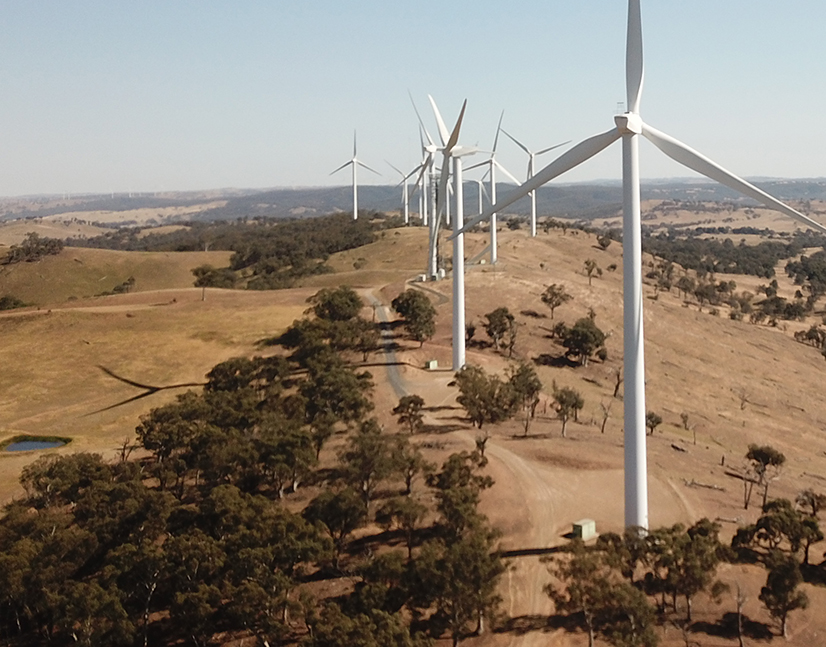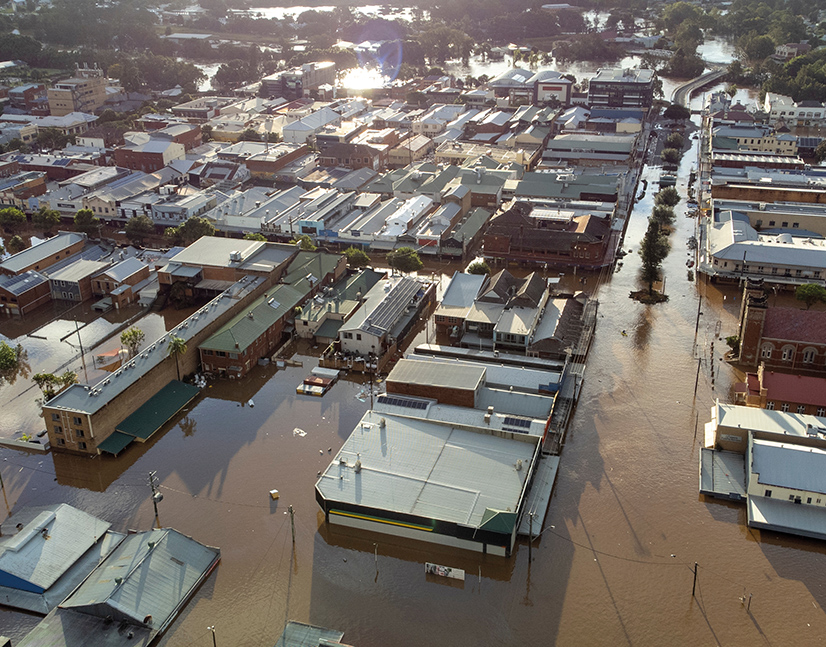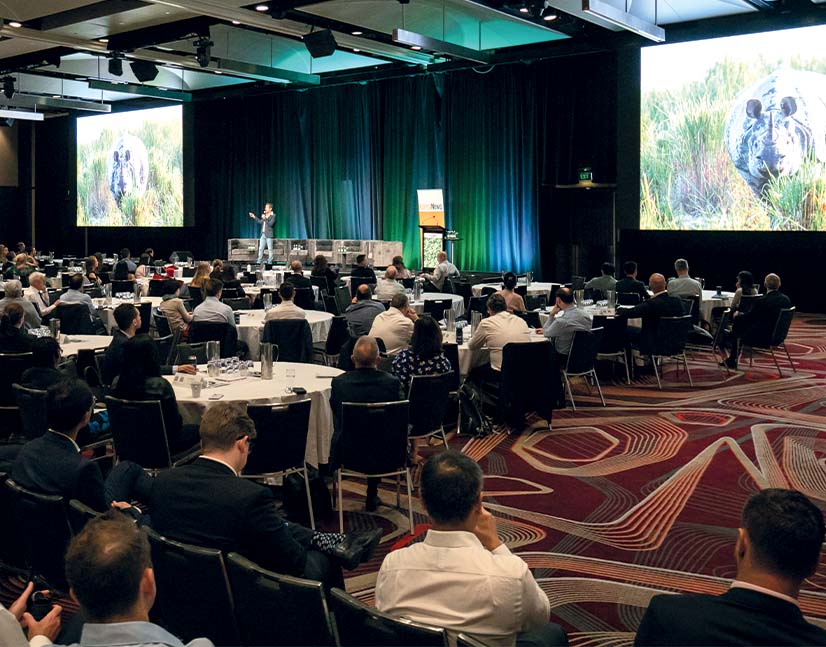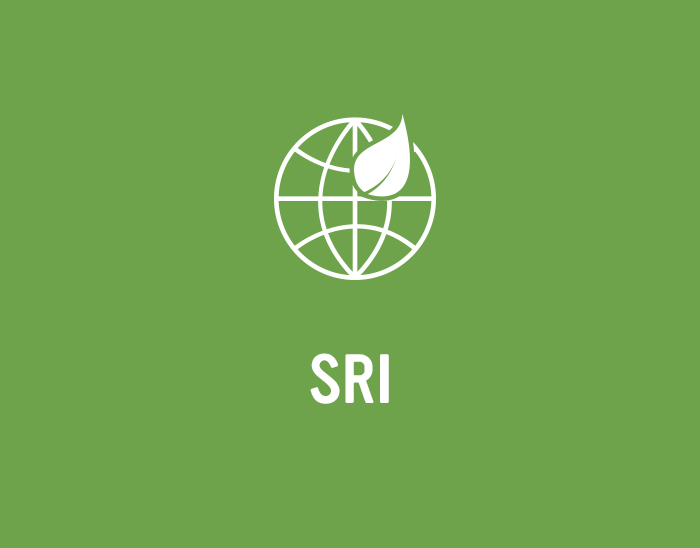
Practical considerations to the fore in Australian mandatory reporting
Mandatory climate reporting is quickly becoming a reality for Australian entities, with the development of standards well under way and implementation rapidly approaching. At the Investor Group on Climate Change Summit, which took place in Sydney in August, speakers discussed what is coming down the line in Australia and how it tracks with global developments.
Kathryn Lee Senior Staff Writer KANGANEWS
In the next 18 months, large Australian entities will be required to deliver climate reporting just as they now complete financial reporting. The mandate will extend to a range of medium-sized entities by later this decade. Discussions at the Investor Group on Climate Change Summit made clear that thinking is rapidly turning to implementation. For instance, Australia’s federal Treasury has completed two consultation processes on mandatory reporting in 2023 – one on discovery and another on design.
Rebecca McCallum, director of the Treasury’s climate disclosure unit, said the consultation responses suggest broad support for the concept of mandatory reporting. “The second consultation, which closed in July, maintained strong support for the reforms but I also think everyone has stepped another layer into the level of detail. There are now a lot of questions about ‘how will it apply to me’ and ‘what will it look like on the ground’.”
Treasury expects to release a consultation on draft legislation in the coming months before introducing final legislation to parliament during 2024. It will be up to the Australian Accounting Standards Board (ASSB) to decide what the actual reporting standards will be. So far, the understanding is that they will align closely with the International Sustainability Standard Board (ISSB)’s newly published standards.
“We are still working through this, finalising policy, and then we will consult again on the exposure draft legislation later this year,” McCullum continued. “We are also working closely with the ASSB and the Auditing and Assurance Standards Board, and with our colleagues the regulators ASIC [the Australian Securities and Investments Commission] and APRA [the Australian Prudential Regulation Authority] to ensure what we are setting up is meaningful from a regulatory perspective.”
The final standards are not a fait accompli, however. According to McCallum, Treasury is not completing “consultation for consultation’s sake”. Rather, she revealed that it is carefully considering all feedback and is operating on the basis that the form of the standards is undergoing a genuine evolution through the development and consultation process.
“We have approached the consultation rounds with a genuine desire to ensure we are considering the feedback received. It is particularly hard when there is feedback that we have gone too far and that we have not gone far enough,” she said. “Then again, sometimes this is a sign that policy settings are right. I would be very surprised if the final policy position the government announces is exactly what went in the consultation papers, across a range of issues.”
According to the latest Treasury consultation, the reporting regime will be rolled out in stages beginning in 2024/25 with Australia’s largest listed and unlisted companies, banks, superannuation funds and credit unions. By 2027/28 this will include a much larger group of companies (see table). Treasury estimates about 20,000 entities will ultimately be affected by the regime.
ONGOING EVOLUTION
Emissions reporting is a large and developing part of the Eglobal landscape. The delivery of mandatory requirements in Australia will not be the end of the story, however.
Speakers at the IGCC event pointed out that the standards will represent a minimum baseline that should not be interpreted as a finish line.
“It is important to start with a reporting framework that sets a minimum standard,” said Michael Salvatico, head of Asia Pacific, Middle East and Africa sustainability solutions at S&P Global. “Some companies will struggle to achieve the minimum – for instance, a number of private companies we work with really struggle with reporting and even to calculate carbon emissions, energy use or water consumption. There will be challenges for companies to meet the minimum standard, but there will also always be companies that go above and beyond to demonstrate to stakeholders that they truly have control.”
We have approached the consultation rounds with a genuine desire to ensure we are considering the feedback received. It is particularly hard when there is feedback that we have gone too far and that we have not gone far enough. Then again, sometimes this is a sign that policy settings are right.
In this context, the initial format of the Australian standards will be an important factor in determining how the reporting ecosystem evolves in future. One hint for the local market is that ISSB has taken a relatively prescriptive approach to disclosure requirements, as Sue Lloyd, vice chair at ISSB, outlined at the IGCC event.
She explained that ISSB felt it was important to be precise rather than allow any risk of doubt. “There are very specific requirements about the scenario analysis companies need to do to assess climate resilience and when to do qualitative versus quantitative analysis,” Lloyd explained. “This is because we want to make sure there is the same confidence in this new reporting system as exists for financial statements.”
Overall, ISSB wants its standards to be “precise enough they can be subject to assurance and regulation”, so users can be confident the disclosures they provide are truly reliable and consistent.
This is not the only philosophical approach to a reporting regime, however. April Mackenzie, chief executive at New Zealand’s External Reporting Board (XRB) – which is responsible for the local climate-reporting regime – said the process of developing standards in New Zealand chose to focus on a principles-based approach rather than a prescriptive list of requirements.
PROPOSED TIMELINE FOR AUSTRALIAN MANDATORY DISCLOSURE REQUIREMENTS
| Entity Group | Implementation From | Reporting Entities Added |
|---|---|---|
|
1 |
2024/25 |
Entities reporting under chapter 2M of the Corporations Act that meet two of three thresholds: |
|
2 |
2026/27 |
Entities reporting under chapter 2M of the Corporations Act that meet two of three thresholds: |
| 3 | 2026/27 |
Entities reporting under chapter 2M of the Corporations Act that meet two of three thresholds: |
She explained: “When there are entities that are unfamiliar with but are trying to meet a new requirement, giving them a list of disclosures inevitably pushes them toward compliance. While there are challenges to not telling companies exactly what they need to do, we are trying to fill the gap with nonmandatory guidance.”
The aim is to bring about behavioural change. “We want New Zealand to shift the dial to genuinely move to a low-emissions economy, rather than to simply produce a list of disclosures that allow entities to be compared with each other,” Mackenzie added. “It is no good to compare companies if there has been no
behaviour change.”
This applies as much to the buy side as it does to corporate entities. Mackenzie pointed out that not all investors are as progressed on sustainability engagement and reporting as the leaders in the field. Reporting standards are just as valuable a tool to promote engagement in this space as they are in the corporate world.
She said: “If all we do is shine a light on information, it might not change behaviour. XRB is about moving the dial inside the entity as well. We have developed our standards with the view that it is not only about external capital and what can be achieved there, but also about the allocation of capital inside the entity and to promote behavioural change right through organisations from the board downward.”
McKenzie said she sees the merits of a prescriptive approachand acknowledges the XRB’s way brings its own challenges. However, she is also confident that the New Zealand approach leaves potential for more growth. Most importantly, the slightly different priorities do not reflect a fundamental divergence of purpose. XRB is in constant conversation with ISSB and Mackenzie credited the global body with helping New Zealand’s mapping process, answering questions and facilitating comparison of the two sets of standards.
“In a field that is changing so rapidly and where there is so much innovation, as the standard setter we do not know better than the entities that need to do these disclosures or their investors,” Mackenzie told conference delegates. “We try to engage with investors to understand the areas they want to learn about, and we need to allow entities and investors wiggle room to keep innovating and pushing boundaries.”

WOMEN IN CAPITAL MARKETS Yearbook 2023
KangaNews's annual yearbook amplifying female voices in the Australian capital market.















